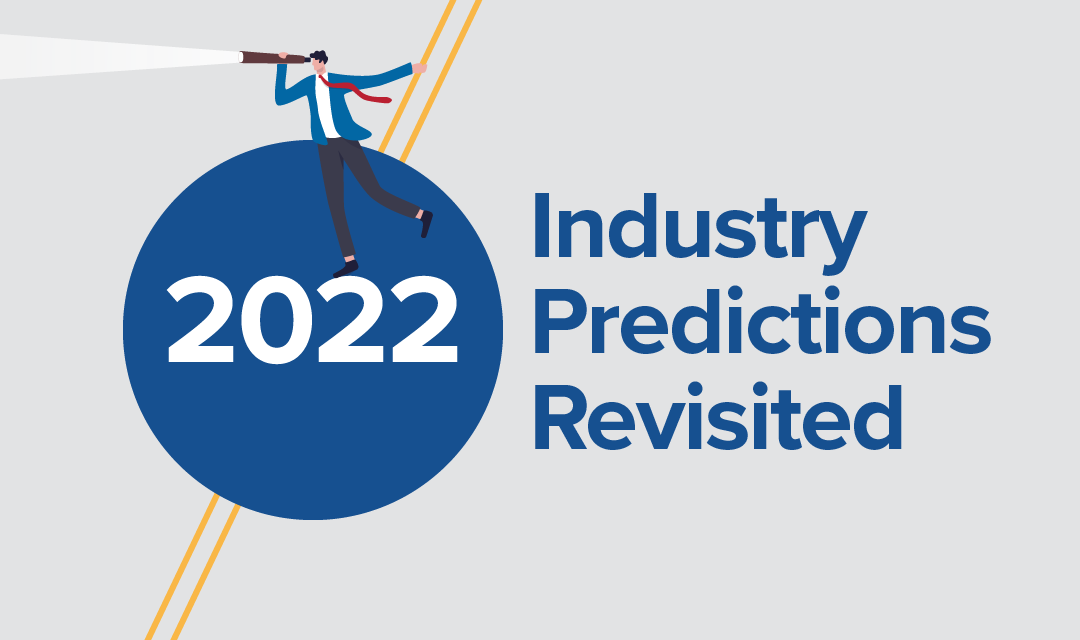At Brown & Brown Absence Services Group we remain vigilant in observing and analyzing the trends and issues facing group carriers and the absence industry. Early in the year, we predicted what we expected 2022 to look like as impacted by the COVID-19 pandemic and other macro-level factors. We have revisited these predictions and assessed our projections against industry development.
The Great Resignation will cause a rush in hiring decisions and may lead to disappointment in selecting the right talent for your business goals and your culture.
Unfortunately, little has changed within the carrier landscape in the past year as it relates to obtaining both adequate staffing levels and highly proficient talent to fill open roles. While carriers have made significant investments to attract talent to fill gaps in their claim operations, retaining them long enough to become fully proficient continues to be a headwind for the industry.
While many carriers were hopeful that they would leverage the talent challenges as an opportunity to refresh operational approaches and assess long-term needs, the primary focus of most continues to be addressing short-term needs that are critical for maintaining day-to-day operations.
At Brown & Brown Absence Services, the breadth of our support in the form of talent solutions has expanded this past year. We view this as an additional indicator that carriers are still struggling to staff their claim volumes and are seeking alternative means to meet their claims operations’ needs.
Looking ahead, we continue to believe there is an untapped opportunity for carriers when hiring new claim professionals. Focusing on an approach that prioritizes, not just training, but also mentoring new claim professionals is key to investing in talent for the long haul.
The COVID-19 pandemic has provided a chance for a retrospective view of the disability claims industry and will require the examination of lessons learned to navigate our new normal.
We saw 2022 as a chance for carriers to focus on and reevaluate strategies most impacted by the pandemic. In this retrospective, we identified three areas we expected to be of particular importance – adopting remote work policies, prioritizing talent management, and better managing LTD results. Despite the extensive dedication of resources and deployment of new strategies, changes brought on by the pandemic still linger in each of these areas.
-
- We saw many carriers adopt some version of a hybrid work policy in 2022, with a few transitioning to 100% remote for select staff when appropriate.
- Carriers have resorted to offering unprecedented incentives to experienced mid-career staff to ease the impact of post-pandemic losses and the exodus of Baby Boomers from the workplace. Talent management, however, has an even broader issue looming – waning claims expertise.
- As the year wore on, a shift within the industry seems to have occurred as caseload mixes of both Short-Term (STD) and LTD claims have drifted back to pre-pandemic levels. As a result, there has been an increased focus on auditing and analytics to ensure the accuracy of work, especially where performance guarantees are attached.
We expect carriers will continue to devote time and resources to these areas throughout the year ahead, with particular focus placed on hybrid work arrangements and a broadening of the talent pool to fill open positions. We also expect the trend toward leveraging technologies for better managing LTD claim blocks to increase for the foreseeable future.
Pandemic-related operational challenges will continue to plague the Social Security Administration, decreasing the predictability and stability of decisions.
Anyone with basic industry knowledge would have been inclined to predict continued operational challenges within the Social Security Administration (SSA) in 2022. We expected a significant increase in initial and reconsideration level backlogs and a decrease in hearing decision volume predicated by declining national hearing inventory.
November 2022 marked the highest point in SSDI claim backlogs since the onset of the pandemic, with initial claim decision backlogs up 21% year-over-year. Inventory is up 55% when comparing current volumes to those from February 2020. This is particularly concerning in light of recent comments from Social Security’s Deputy Commissioner of Communications acknowledging staffing issues with an “18% attrition rate for Disability Determination Services (DDS) overall, and 25% for analysts,” with “the lowest staffing level of the last 25 years.”
The overall volume of hearing determinations and awards declined considerably, driven by a reduced inventory and a slowdown in scheduling activity that aligned with the resumption of in-person hearings. October 2022 decision (23,213) and award (10,530) hearing volumes marked the lowest point since the onset of the pandemic. Hearing decisions continue to remain a pain point as requests for hearing filings were down in October by 6% year-over-year, with decisions declining by 16%.
As we look ahead, we remain hopeful that we will see at least minor improvements in claim processing. Social Security is working to implement a new telephony system and will be converting the Continuing Disability Review (CDR) process to a fully online procedure. With COVID-19 restrictions lifted at hearing offices and hearing scheduling transitioning back to hearing office jurisdiction, we expect to see an increase in the number of in-person hearings. It is too soon to know if this will negatively impact the volume or cadence of virtual hearings scheduled.




